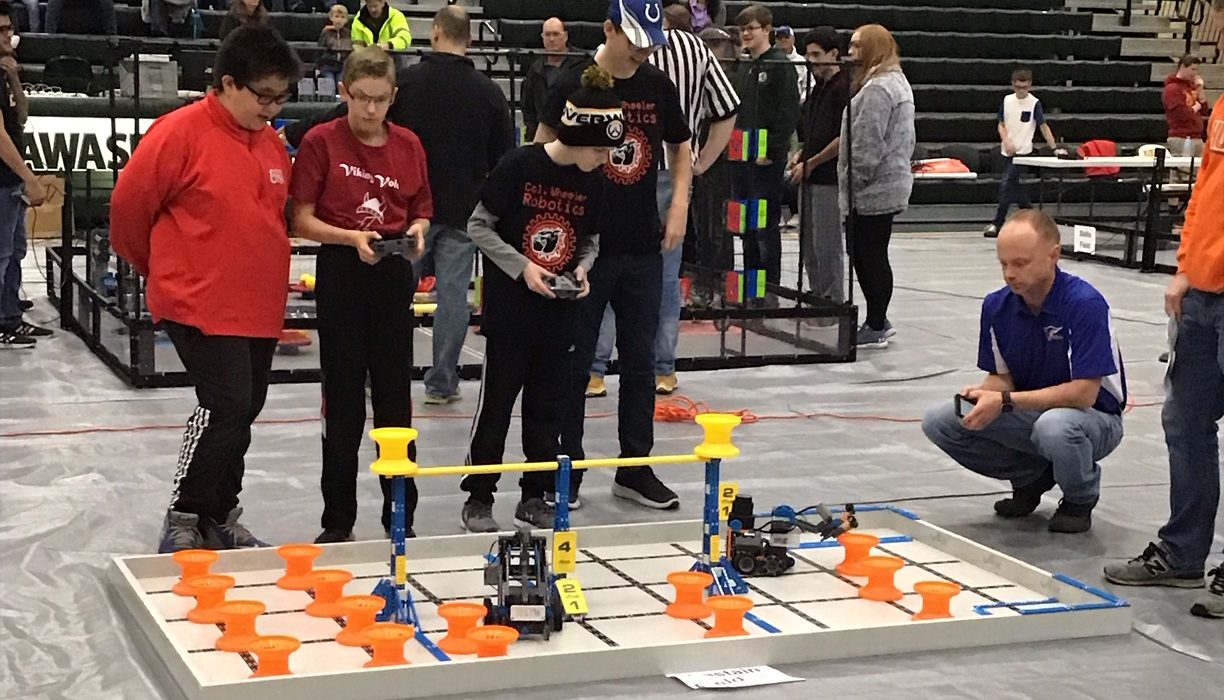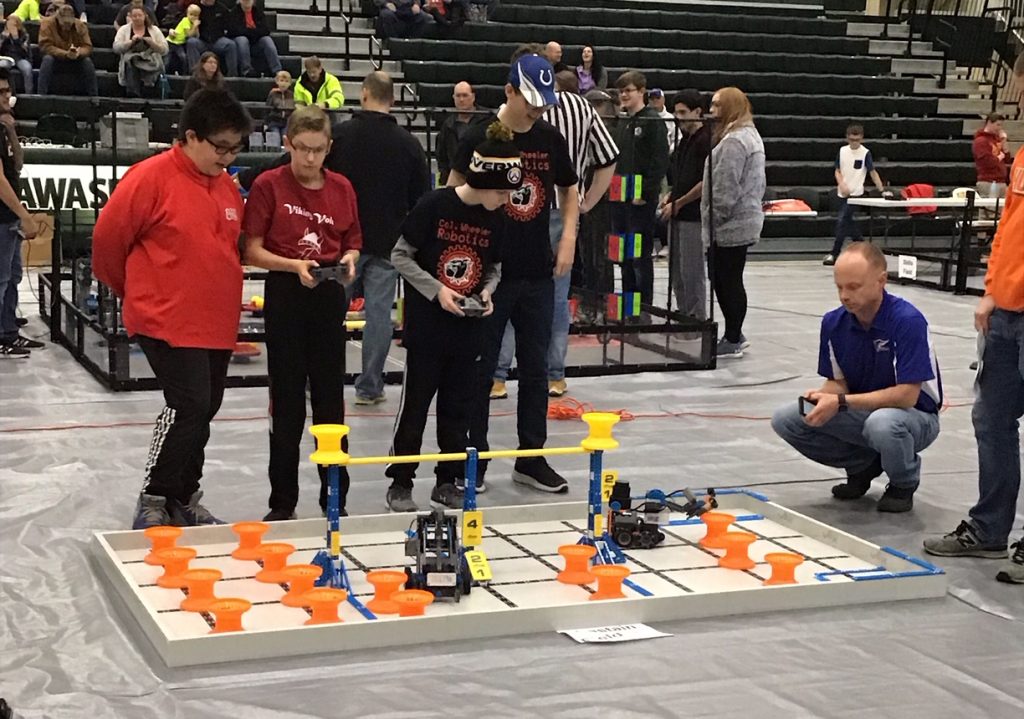August 28, 2019 // Parish
‘STREAM’ points Sacred Heart to future
WARSAW — Sacred Heart School in Warsaw shares with its parish a motto — “Where God and Education Lead the Way” — to proclaim that a completely secular approach to learning doesn’t go far enough.
This year, the school will continue to build on a one-word statement of the same message. Teachers have adopted the STEM approach but are integrating religion and the arts into a lively mix. That yields an acronym, STREAM, said to propel students further along the path of readiness for life as a whole person.
STREAM stands for “science, technology, religion, engineering, arts and mathematics.” Sacred Heart’s STREAM coordinator, Andrea Komorowski, calls this a framework of “real-world, relevant, rigorous instruction in problem-based experiences.”
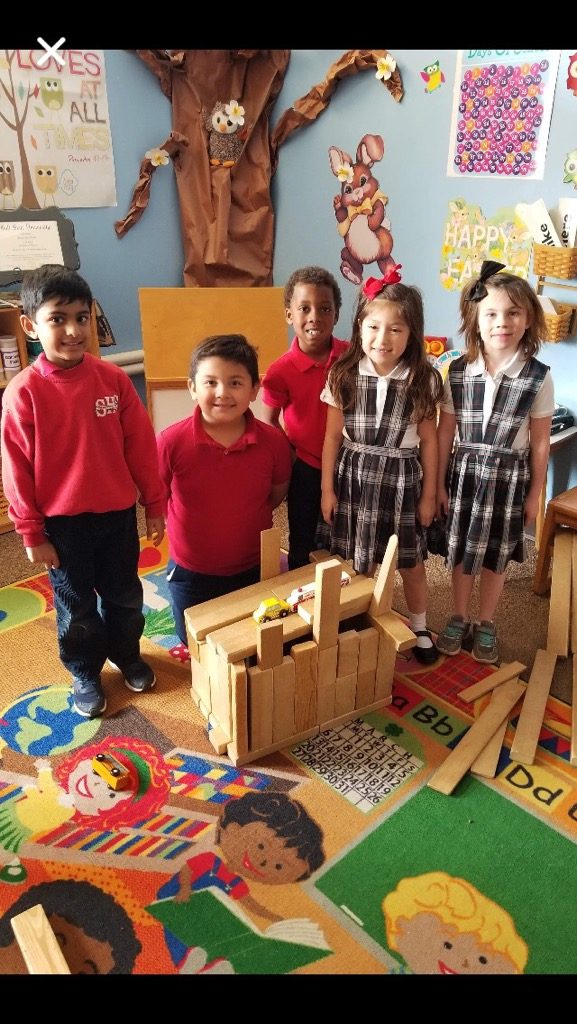
Photos provided by Andrea Komorowski
Kindergarteners at Sacred Heart School build a cathedral out of blocks.
But she adds that this focus, which the school embraced about six years ago, is constantly evolving while retaining a guideline present from the start, namely that “religion is the most important piece” in the combination.
“We are not just teaching religion as a separate subject,” Komorowski said. “Just as I imagine most Catholic schools do, we make it a point to incorporate our Catholic faith in all areas so that it is a part of the students’ way of life and not something just done for 30 minutes a day or at Mass on Sunday.”
The integrative approach is adding to an overall “continuous improvement journey,” said Komorowski, who is also the resource specialist at the Pre-K-6 school. STREAM encourages teachers to become more adept at bringing multiple subject areas into students’ daily lessons. Instruction includes more hands-on learning, as required by Indiana state standards, as well as the introduction of broader abilities to make sense of a complex, changing world of business and culture, she said.
This year, for example, educators will incorporate more of an “Engineering is Elementary” program and will utilize a “Digitarium” — a kind of inflatable planetarium — to enhance lessons on space exploration.
But they won’t neglect the goal of shaping students as well-rounded contributors to society. Komorowski referred to guidance from Sacred Heart’s pastor, Father Jonathan Norton, who she said has pointed out that “God gave humans the unique ability to create something of beauty.” She noted, “Art and music are an important part of our Catholic tradition, so it is important to keep the arts in our curriculum.”
Mike McClain, the school’s new principal, hopes to offer further professional development to teachers as another step toward school improvement. “We need to continue doing what is best for kids and equip them for the future” in terms of careers — and more.
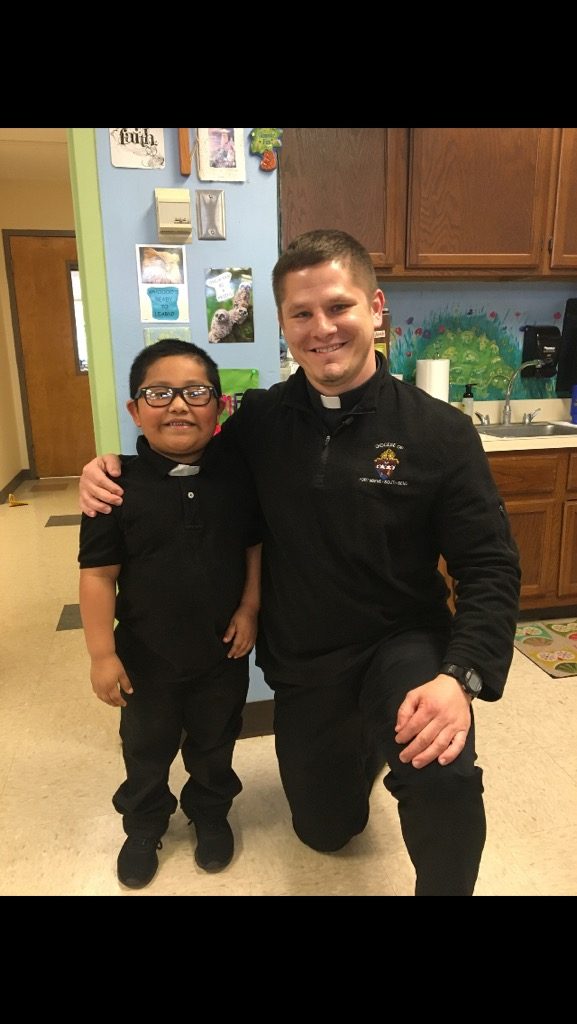
On dress as your vocation day, most students at Sacred Heart School dressed for a secular vocation. A kindergartener, Joel Velazquez, dressed as a priest and posed with Father Jonathan Norton.
The ability to see the entire world “through a Catholic lens” and stay “grounded in the Lord” is a gift Sacred Heart’s educators can share through STREAM as students build their personal futures, McClain added.
“It is our job, in collaboration with their parents and family members, to equip them with the moral decision-making skills they need to get themselves and their loved ones to heaven,” he said. “By infusing religion into their academic life, we are helping to develop and reinforce their own Catholic lens.”
Breaking down the walls between science, education
During June and early July, teachers from Marian High School, Mishawaka, and Saint Joseph High School, South Bend, worked with Catholic scientists, philosophers and theologians to meet a crucial need: the integration of faith and science in their classrooms and throughout the high school curriculum. They and other educators were welcomed to the Science & Religion Initiative of the McGrath Institute for Church Life of the University of Notre Dame for weeklong seminars aimed at this goal at the Notre Dame campus.
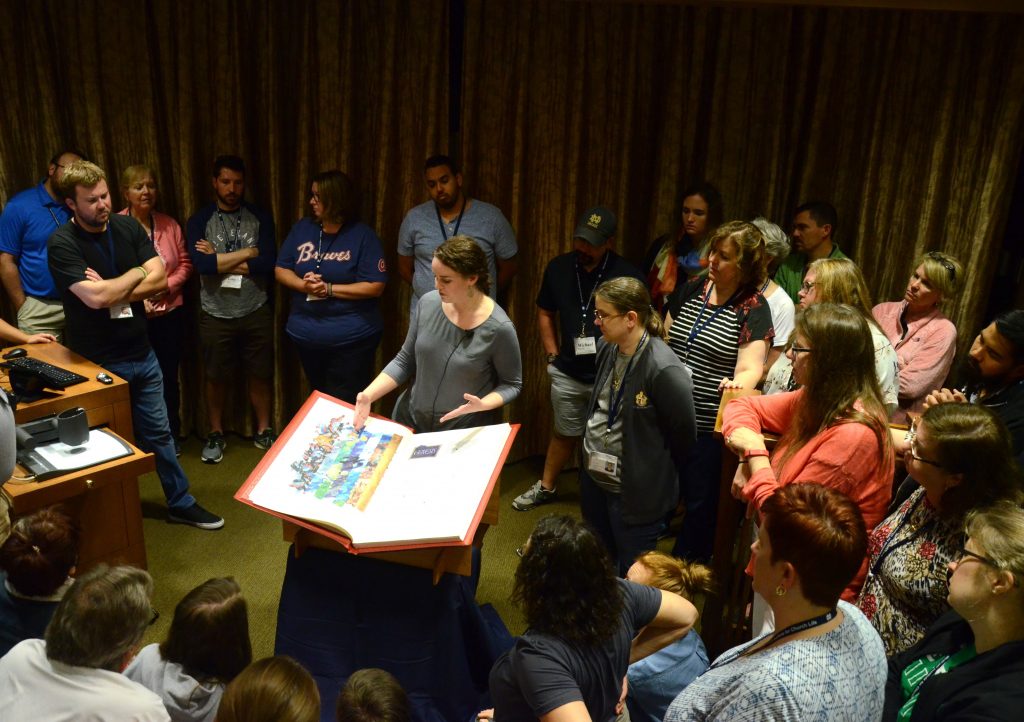
Carolyn Pirtle of the McGrath Institute for Church Life describes the depiction of the seven days of creation in the St. John’s Bible to high school teachers at the SRI Capstone Seminar at the University of Notre Dame in July. — William Schmitt
Since 2014, Catholic educators have joined with peers from Catholic schools across the country for the sake of building “a synthesis of faith and culture, reached by integrating all of human knowledge through the subjects taught, in the light of the Gospel,” as called for by the Vatican Congregation for Catholic Education. Since then, more than 400 high school teachers nationwide have participated in the Foundations and Capstone seminars in an effort to create a new approach to professional development and classroom implementation.
SRI gives teachers official Church resources and insights to draw upon for big-picture discussions and lesson plans that break down the walls often isolating religion education from science education. The initiative equips educators to convey the complementarity of faith and reason, science and religion. The approach received international recognition in 2018 with an Expanded Reason Award bestowed by the Vatican Foundation and the University of Francisco de Vitoria.
Selected participants probe ways to help students “see scientific investigation and discoveries in the light of the Catholic faith,” said Chris Baglow, director of SRI. “To be able to connect [scientific learning] to their faith is a way of helping young people to see the glorious harmony between the Book of Nature and the Book of Scripture, which both reveal the Creator.”
Addressing the teachers at one of this summer’s seminars, Baglow suggested “bringing home to your students that, without a holistic view of the world, they’ll find it very hard to understand themselves and find it very hard to know how to act and find meaning in that world.”
They need to see how “Christianity is offering answers” in a world where divine principles endure but “there are always new horizons” for any field of knowledge to explore, Baglow said. Theology is defined as “faith seeking understanding”; that is, “it’s an activity” in which students can feel engaged.
Sister Marie Morgan and Mary Ann Hinora represented Marian at this year’s Foundations seminar, while Chris Culver, Deb Semmler, and Mary Kate Lamp represented Saint Joseph at the advanced Capstone Seminar.
One teacher responded to the seminar by commenting that students “shouldn’t think it means they’re less Catholic” if they have questions that go beyond their catechetical learning. In embracing questions, “they come to understand God better.”
Another teacher said the seminar had answered many of her own questions, but she was also grateful that the week’s talks and workshops had “given me far more questions to actively seek answers to.” Those sessions, she said, reinforced the guidance, “read more about this, look this up,” using the authoritative resources that could help her reach students.
SRI is now accepting high schools’ applications for the 2020 Foundations Seminar in its two locations. Applications are due by Dec.3. Educational leaders can apply or learn more about these programs, the Capstone Seminar and Institute Days by visiting the SRI website, mcgrath.nd.edu/science.
The best news. Delivered to your inbox.
Subscribe to our mailing list today.






